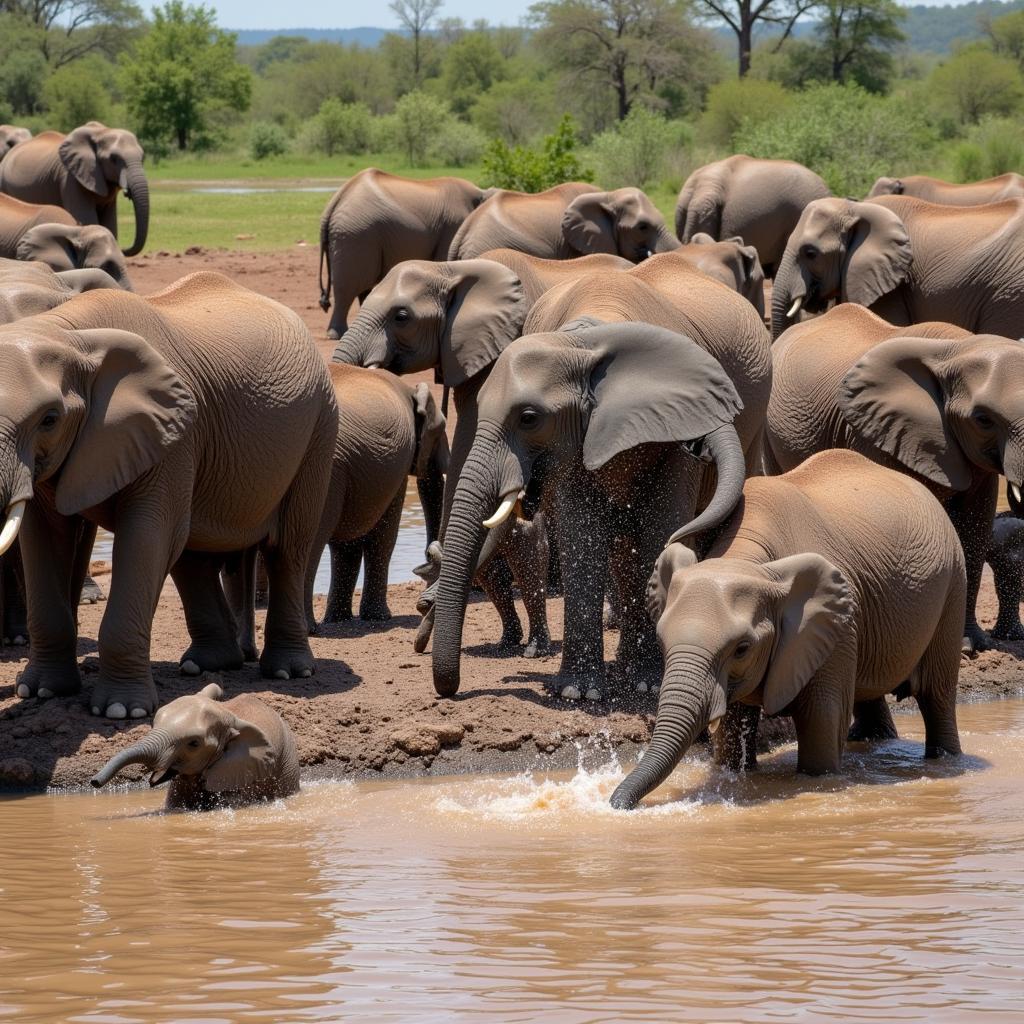The African Fish Eagle: A Majestic Predator of the Masai Mara
The African fish eagle, with its powerful wingspan and piercing gaze, is a captivating sight in the vast savannas of the Masai Mara. This majestic bird, known scientifically as Haliaeetus vocifer, is a symbol of the region’s rich biodiversity and captivating wildlife. The African fish eagle is not only a breathtaking creature, but also a vital part of the Mara’s ecosystem, playing a crucial role in maintaining the delicate balance of the food web.
A Majestic Predator of the African Savanna
The African fish eagle is a large raptor, with a wingspan of up to 2 meters (6.5 feet) and a body length of up to 90 cm (35 inches). It has a distinctive dark brown body with a white head and breast, and a powerful yellow beak, which it uses to snatch fish from the water with remarkable precision. Its piercing gaze and commanding presence make it a formidable predator, capable of taking down fish up to 5 kg (11 lb) in weight.
A Symphony of Sounds
The African fish eagle is known for its distinctive and powerful call, a loud, high-pitched “kek-kek-kek” that echoes across the Mara landscape. This call serves a variety of purposes, from attracting a mate to warning off potential rivals. The call of the African fish eagle is a haunting and unforgettable sound that is synonymous with the African savanna.
The Importance of the African Fish Eagle in the Masai Mara
The African fish eagle plays a crucial role in the Masai Mara ecosystem. It is a top predator, helping to control fish populations and maintaining the balance of the food web. By preying on fish, the African fish eagle prevents overgrazing of aquatic plants and maintains water quality. Its presence also serves as an indicator of the health of the ecosystem, as its populations are sensitive to environmental changes.
Conservation Status and Threats
The African fish eagle is classified as a “Least Concern” species by the International Union for Conservation of Nature (IUCN). However, the species faces a number of threats, including habitat loss, pollution, and poaching. These threats can lead to a decline in the population of the African fish eagle, which could have a negative impact on the entire ecosystem of the Masai Mara.
The African Fish Eagle: A Symbol of the Masai Mara
The African fish eagle is more than just a predator, it’s a symbol of the Masai Mara’s beauty and resilience. The sight of this magnificent bird soaring through the skies, its powerful call echoing across the savanna, is a reminder of the incredible biodiversity that exists in this unique part of the world.
A Source of Inspiration and Wonder
The African fish eagle has captured the imaginations of people from all over the world. It is a source of inspiration for artists, poets, and writers, and its image has been used to represent the power and majesty of nature. The African fish eagle continues to inspire and amaze, reminding us of the beauty and importance of the natural world.
“Seeing an African fish eagle soaring above the Mara River is an unforgettable experience,” says renowned wildlife photographer, Dr. James Thompson. “Its power, grace, and beauty are truly awe-inspiring, reminding us of the incredible diversity and wonder of the African savanna.”
“The African fish eagle is a vital part of the Masai Mara’s ecosystem, and its presence is a testament to the health of this incredible place,” adds conservation biologist, Ms. Sarah Ngozi. “It is our responsibility to protect this magnificent bird and its habitat for future generations.”
Frequently Asked Questions (FAQs)
1. What is the lifespan of an African fish eagle?
African fish eagles typically live for 15-20 years in the wild, but some individuals have been known to live for up to 30 years.
2. What is the breeding season for African fish eagles?
The breeding season for African fish eagles usually takes place between May and October.
3. What do African fish eagles eat besides fish?
While fish make up the majority of their diet, African fish eagles are opportunistic predators and will also feed on reptiles, amphibians, small mammals, and birds.
4. How can I help protect African fish eagles?
You can help protect African fish eagles by supporting conservation organizations that work to conserve their habitat and reduce threats such as pollution and poaching.
5. Where can I see African fish eagles in the Masai Mara?
African fish eagles can be seen along the Mara River and its tributaries, as well as in the wetlands and swamps that dot the savanna landscape.
6. What are the main threats facing African fish eagles?
The main threats facing African fish eagles include habitat loss, pollution, and poaching.
7. How are African fish eagles adapted to their environment?
African fish eagles are adapted to their environment with their sharp talons, powerful beaks, and keen eyesight, making them efficient hunters.
8. What other birds of prey can be found in the Masai Mara?
Besides the African fish eagle, the Masai Mara is home to a variety of other raptors, including the African hawk-eagle, the martial eagle, and the Bateleur eagle.
9. What are the best times of year to visit the Masai Mara to see African fish eagles?
The best time to visit the Masai Mara to see African fish eagles is during the dry season, from June to October, when the birds are most active and the vegetation is less dense.
10. What other fascinating wildlife can be found in the Masai Mara?
The Masai Mara is a wildlife haven, home to a diverse array of animals, including lions, elephants, leopards, cheetahs, giraffes, zebras, and a wide variety of antelope species.
If you’re looking for an unforgettable wildlife experience, the Masai Mara is a must-visit destination. And when you see a majestic African fish eagle soaring overhead, take a moment to appreciate this remarkable bird and its vital role in the ecosystem.



